|
 Gerald Durrell Endemic Wildlife Sanctuary (GDEWS) Gerald Durrell Endemic Wildlife Sanctuary (GDEWS) |
|
|
Fast facts
. named after the world-famous conservationist Gerald Durrell, who was pivotal in saving biodiversity in
Mauritius, and opened by his wife Lee Durrell
. jointly run by the Mauritian Wildlife Foundation and the National Parks and Conservation Service
. also known as the Aviaries, Black River Aviaries or the Captive Breeding Centre
. set up in 1976 for captive breeding and hand rearing rare endemic animals of Mauritius and Rodrigues |
|
|
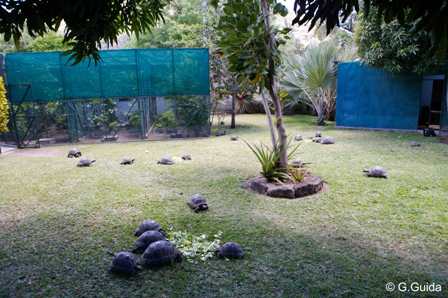
Juvenile tortoises in GDEWS compound
|
Although set in a relatively small compound, nowhere has such a facility been as instrumental as GDEWS in saving so many species from an almost definite extinction. The work at GDEWS is varied and consists mainly of head-starting conservation projects, supporting field staff in their work, native animal rehabilitation, training of staff in animal handling and general veterinary practices, captive breeding of birds and mammals, and manufacture of nest boxes and other field equipment. GDEWS played a key role in the recovery of Mauritius Kestrels, Pink Pigeons and Echo Parakeets, undertaking captive breeding programmes for each of them. These came to an end in 1994, 1999 and 2005 respectively, since by then the captive breeding and releases into the wild had been so successful that it was no longer essential.
|
|
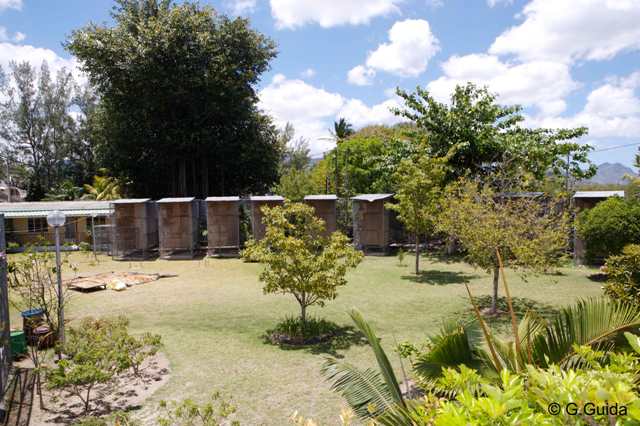
GDEWS compound
|
This facility is run by a partnership between MWF and the National Parks and Conservation Service (NPCS), whereby we provide the scientific expertise in animal husbandry, including hand rearing, medical skills and rehabilitation, and NPCS mainly provides the logistics of managing and maintaining the buildings and grounds, supplying the bulk of food required for the upkeep of the animals and assisting, where possible, in the basic food preparation and feeding of animals along with the cleaning of enclosures.Over time the aviaries has become a key support facility for field conservation. What makes it so successful is the cooperation and interaction of experts in the different fields, and the close collaboration between MWF and NPCS.
|
|
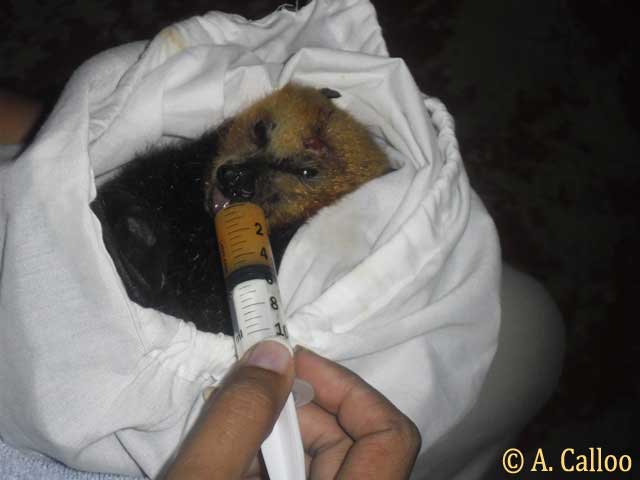
Feeding of Fruits Bats
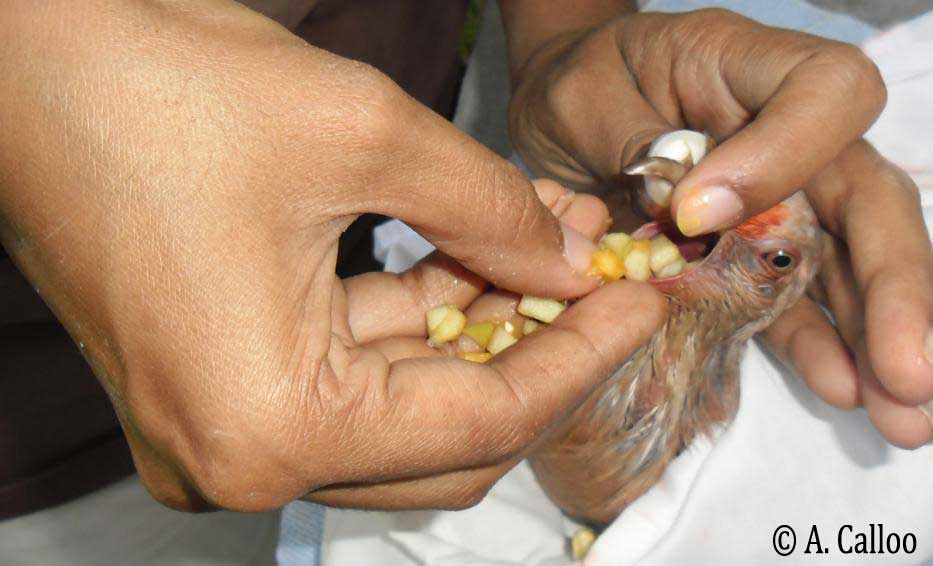
Pink Pigeon squab feeding
|
Some of our achievements at GDEWS are the:
.breeding, rearing and release of around 400 Mauritius Kestrels, 667 Pink Pigeons and over 150
Echo Parakeets; these birds were bred in captivity as the populations in the wild were failing,
and there was a high risk of extinction
.hand rearing and release of 88 Mauritius Fodies on Ile aux Aigrettes
.hand rearing (12) and preparation (17) of Mauritius Fody eggs and chicks from Ile aux Aigrettes
for release on Round Island
.breeding for conservation-based scientific research of around 250 Rodrigues Fruit Bats
.hand rearing and release onto Ile aux Aigrettes of 36 Olive White-eyes, one of the smallest
birds being hand reared in the world
.successful treatment, rehabilitaion and release of countless orphaned, injured and stranded
animals (e.g. fruit bats, breeding seabirds, vagrant seabirds, fur seals).
|
|
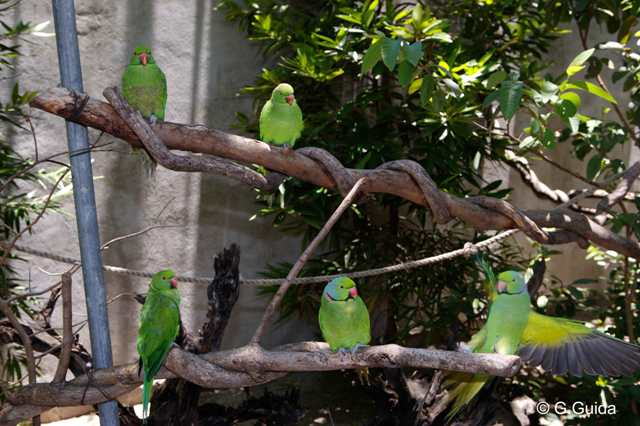
Echo Parakeets
|
Our current projects include: caring for a small number of Echo Parakeets, kept for research purposes; maintaining a small population of the Rodrigues Fruit Bat as a safety net for the dwindling wild population and to improve the genetic diversity of captive populations held overseas; head-starting Aldabra Giant Tortoise hatchlings from Ile aux Aigrettes, for release back onto Ile aux Aigrettes, Round Island, and other islands in the future along with 6 Madagascan Radiated Tortoises also being cared for at GDEWS; and rehabilitating a small number of Mauritius Kestrels and Mauritius Fruit Bats.
|
|
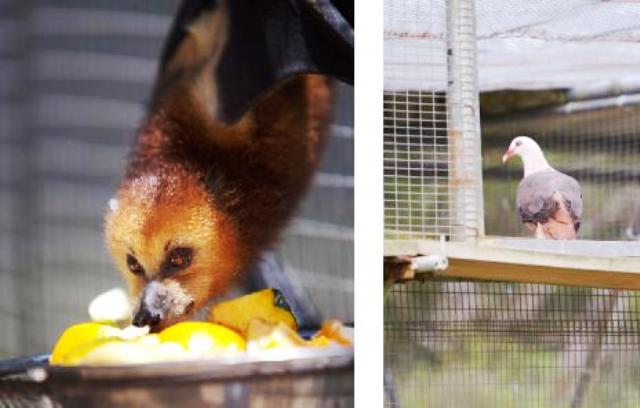
Mauritius Fruit Bat Pink Pigeon
|
In addition, a new project is under way to reinforce the Pink Pigeon sub-populations, in order to reach a total of 500–600 birds, by creating new sub-populations and reinforcing existing sub-populations. Feathered nestlings are being harvested from Ile aux Aigrettes and are then hand reared in groups of two at GDEWS until they fledge and wean with the appropriate weight and condition. The project aims at releasing at least 20 birds at the Lower Black River Gorges. By the end of January 2012, 17 Pink Pigeons had been successfully hand reared and released there and the project is ongoing. |
|
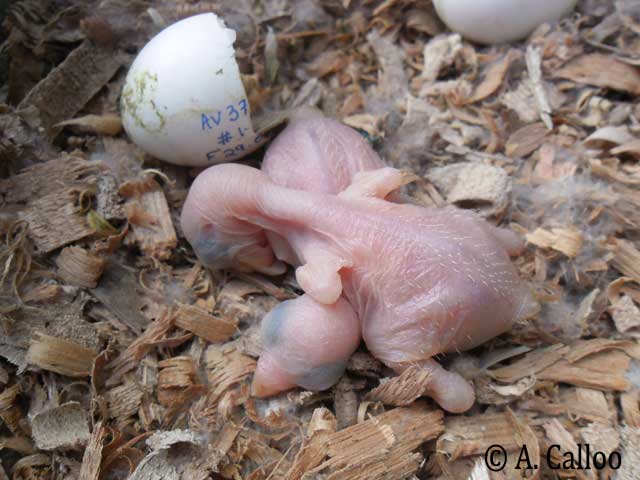
Echo Parakeet chicks
|
The role of the aviaries has become more complex over time, with greater integration with the field work, and is regarded as a key support facility for field conservation. What makes the project so successful is the cooperation and interaction of experts sharing their knowledge, and the close collaboration between MWF and NPCS.
GDEWS has an ever-evolving role and in the future may be changing its focus from land bird to reptile and seabird conservation.
|
|
|
|
|